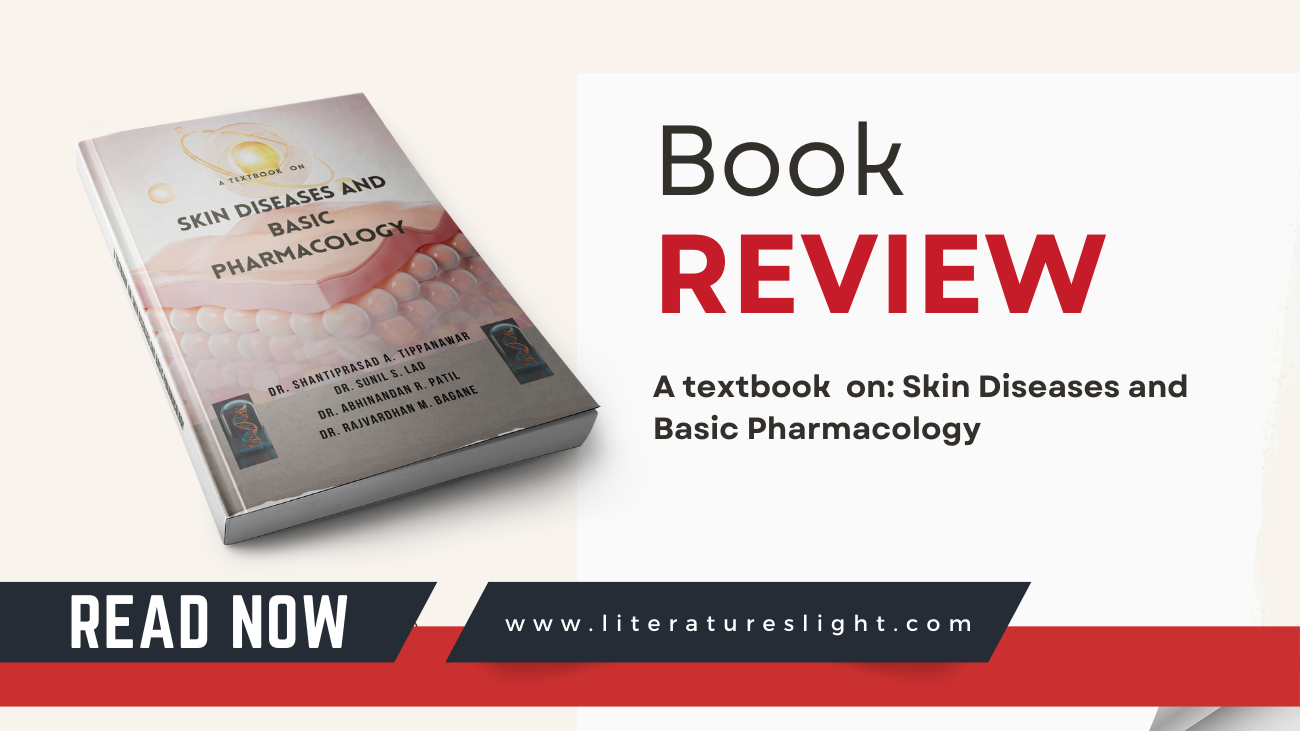Understanding Skin Health: Insights from “A Textbook on Skin Diseases and Basic Pharmacology”
Skin health is a critical component of overall well-being, reflecting both internal health and external care. “A Textbook on Skin Diseases and Basic Pharmacology” provides an in-depth exploration of the skin’s anatomy and physiology, common skin disorders, and various diagnostic and treatment modalities. This article highlights key insights from the book, offering a comprehensive overview of maintaining and restoring skin health.
The Foundation: Anatomy and Physiology of the Skin
Understanding skin health begins with a grasp of its structure and functions. The skin, our largest organ, consists of three primary layers: the epidermis, dermis, and hypodermis. Each layer has distinct roles, from the protective barrier of the epidermis to the supportive structures in the dermis and the insulating functions of the hypodermis. The skin’s physiology encompasses protection against pathogens, regulation of body temperature, and sensory reception. This intricate system requires balanced care to function optimally, underscoring the importance of understanding its detailed anatomy and physiology.
The Role of Nutrition and Hydration
The significance of nutrition and hydration in skin health cannot be overstated. Nutrients such as vitamins A, C, D, and E, along with minerals like zinc and selenium, are vital for maintaining the skin’s integrity and promoting repair processes. Hydration, both internal and external, plays a crucial role in maintaining the skin’s moisture barrier and elasticity. Dehydration can lead to dryness, flakiness, and a compromised barrier function, making the skin more susceptible to infections and irritations. Adequate water intake and a balanced diet rich in antioxidants and essential nutrients are foundational to healthy skin.
Common Skin Disorders
The book delves into several common skin disorders, each with unique causes, symptoms, and treatments:
- Acne: A prevalent condition, especially among adolescents, acne is primarily caused by hormonal fluctuations, excessive sebum production, and bacterial growth. Treatment options range from topical retinoids and benzoyl peroxide to systemic antibiotics and hormonal therapies.
- Eczema and Dermatitis: These terms encompass various inflammatory skin conditions, including atopic dermatitis, contact dermatitis, and seborrheic dermatitis. Eczema is characterized by red, itchy, and inflamed skin, often triggered by allergens, irritants, or genetic factors. Management involves identifying and avoiding triggers, using emollients, and applying topical corticosteroids or immunomodulators.
- Psoriasis: This chronic inflammatory condition manifests as red, scaly plaques, typically on the elbows, knees, and scalp. Psoriasis results from an accelerated skin cell turnover due to immune system dysfunction. Treatment includes topical treatments, phototherapy, and systemic agents like biologics and immunosuppressants.
- Rosacea: Rosacea presents as persistent facial redness, visible blood vessels, and sometimes pustules. Triggers include sun exposure, hot beverages, and stress. Management focuses on avoiding triggers, using sunscreen, and applying topical or oral medications to reduce inflammation and redness.
- Fungal Infections: Common fungal infections like athlete’s foot, ringworm, and yeast infections thrive in warm, moist environments. Antifungal treatments, both topical and systemic, are effective in eradicating these infections.
Systemic and Skin Disorders
The skin often reflects internal health, with many systemic diseases manifesting dermatological symptoms. Conditions such as diabetes, liver disease, and thyroid disorders can lead to various skin issues, from dryness and itchiness to more severe complications like necrobiosis lipoidica in diabetes. Recognizing these manifestations aids in the early diagnosis and management of underlying systemic diseases. Additionally, skin cancer, a significant concern, is extensively covered in the book, highlighting types such as basal cell carcinoma, squamous cell carcinoma, and melanoma, along with their diagnostic and treatment approaches.
Diagnostic and Treatment Modalities
Effective skin disorder management relies on accurate diagnosis and appropriate treatment strategies. The book outlines several diagnostic methods, including:
- Clinical Examination: Visual inspection and palpation are fundamental in assessing skin conditions.
- Dermatoscopy: This non-invasive technique allows for detailed examination of skin lesions, aiding in the diagnosis of melanoma and other skin cancers.
- Biopsy: A skin biopsy provides definitive diagnosis through histopathological examination.
- Laboratory Tests: Blood tests and cultures help identify underlying systemic conditions and infectious agents.
Treatment modalities are categorized into pharmacological and non-pharmacological approaches:
- Pharmacological Treatments: These include topical agents (steroids, retinoids, antibiotics), systemic medications (immunosuppressants, biologics), and newer therapies like monoclonal antibodies targeting specific immune pathways.
- Nonpharmacological Treatments: These encompass lifestyle modifications, phototherapy, laser treatments, and surgical interventions for skin cancers and severe cases of chronic conditions.
Also Read: Review: A textbook on: Pharmacotherapeutics
Special Topics in Dermatology
The book also addresses specialized areas within dermatology:
- Pediatric Dermatology: Focuses on skin conditions prevalent in children, such as diaper dermatitis, atopic dermatitis, and genetic disorders like ichthyosis. Treatments are tailored to the delicate skin and unique needs of pediatric patients.
- Geriatric Dermatology: Older adults often face skin issues related to aging, such as xerosis, pruritus, and increased susceptibility to infections. Management strategies emphasize gentle skincare and addressing comorbidities.
- Cosmetic Dermatology: This field involves procedures to enhance appearance, including treatments for wrinkles, hyperpigmentation, and hair loss. Techniques such as chemical peels, botulinum toxin injections, and fillers are discussed.
Conclusion
“A Textbook on Skin Diseases and Basic Pharmacology” serves as an invaluable resource for understanding the complexities of skin health and disease. By integrating knowledge of skin anatomy and physiology with insights into nutrition, common disorders, systemic implications, and advanced diagnostic and treatment methods, the book provides a holistic approach to dermatology. Whether for students, practitioners, or anyone interested in skin health, this comprehensive guide offers essential information and practical strategies for maintaining and restoring healthy skin.






